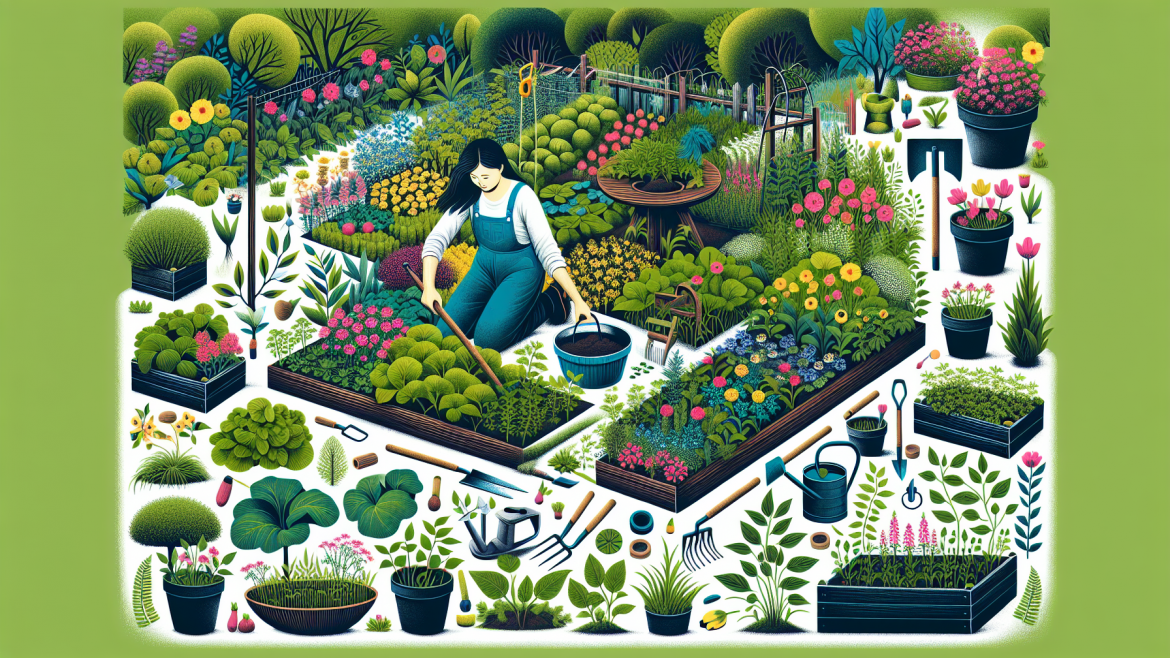A weed-free garden is every gardener’s dream. Weeds not only mar the aesthetic appeal of your garden but also compete with your plants for nutrients, water, and sunlight. Implementing effective weeding techniques can help you maintain a healthy and visually appealing garden. Below are several strategies to keep those pesky invaders at bay.
1. Hand Weeding
Hand weeding is one of the most straightforward and effective methods for small gardens. It involves pulling weeds out by the roots to ensure they don’t grow back. To make hand weeding more effective:
- Weed after it rains or water the garden before weeding; moist soil makes it easier to pull out the entire root.
- Use a weeding tool or a small trowel to remove deep-rooted weeds.
- Be consistent; frequent weeding prevents weeds from setting seeds.
2. Mulching
Mulching is the process of covering the soil with a layer of organic or inorganic material. It serves multiple purposes, with weed control being one of the most significant.
- Organic mulches such as wood chips, straw, and compost decompose over time, adding nutrients to the soil.
- Inorganic mulches like black plastic or landscape fabric block light, which inhibits weed growth.
- Apply a thick layer of mulch (2-4 inches) to prevent weed seeds from germinating and to smother existing weeds.
3. Hoeing
Hoeing is an efficient method for larger gardens. A hoe can cut weeds off at the soil line, effectively killing them by severing the weed from its roots.
- Use a sharp hoe for better precision and effectiveness.
- Hoe in the early morning or late evening when the soil is cooler.
- Sweep the hoe just below the soil surface, targeting weed seedlings before they become established.
4. Crop Rotation
Crop rotation can help manage weeds by disrupting their life cycle. Different crops require different types of care and nutrients, which can limit weed growth.
- Rotate crops annually to make it harder for weeds to adapt and flourish.
- Choose cover crops like clover or alfalfa, which can smother weeds and enrich the soil.
5. Use of Herbicides
Herbicides can be a last resort for troublesome weed problems. There are pre-emergent herbicides that prevent weed seeds from germinating and post-emergent herbicides that kill existing weeds.
- Read and follow label instructions carefully to avoid damaging your garden plants.
- Choose selective herbicides that target specific types of weeds without harming other plants.
- Consider natural herbicides made from ingredients like vinegar or essential oils for a more eco-friendly approach.
6. Solarization
Solarization is an effective, chemical-free method that uses solar energy to kill weeds and their seeds. This technique is especially useful in hot, sunny climates.
- Cover the soil with clear plastic during the hottest months for several weeks.
- The heat captured under the plastic will cook weed seeds, preventing them from germinating.
- This method also kills soil-borne pests and diseases, improving overall soil health.
7. Maintaining Garden Health
A healthy garden is less susceptible to weed invasions. Regular care and maintenance can go a long way in keeping weeds in check.
- Regularly inspect your garden for early signs of weeds.
- Ensure your plants are well-spaced to reduce the open areas where weeds can establish.
- Water and fertilize your garden plants adequately to ensure they outcompete any weeds.
By combining these techniques, you can create a comprehensive weeding strategy that helps maintain a weed-free and flourishing garden. Remember, the key is consistency and vigilance. Happy gardening!
